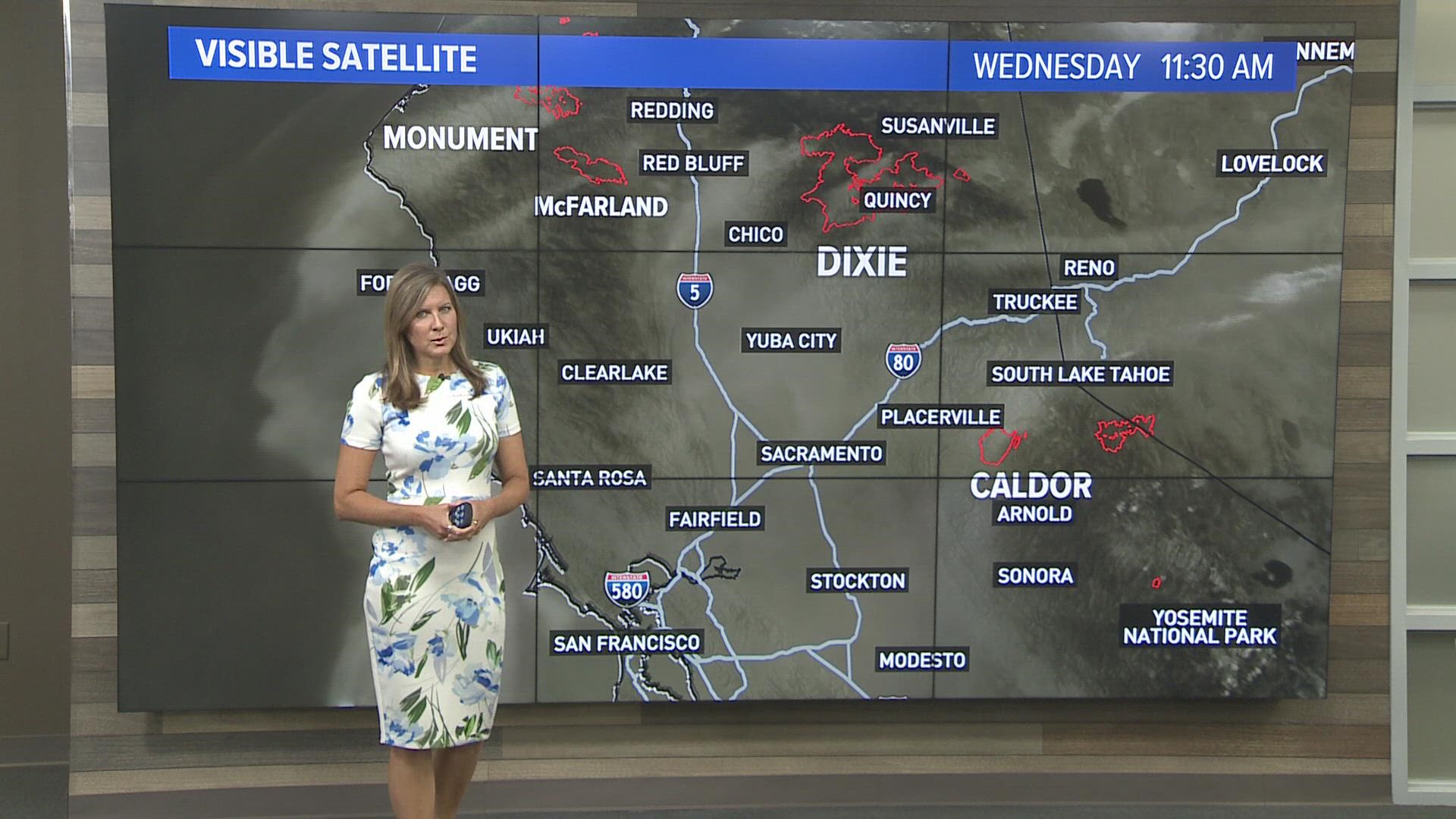SACRAMENTO, Calif. — Weather inside the powerful plumes of the Dixie Fire can be violent and unpredictable, part of what helped it become the largest single fire in California history.
The San Jose State University Fire Weather Research Lab was deployed to the largest fire currently burning in California to get more detailed information other weather instruments can't record. Craig Clements, director of the Wildfire Interdisciplinary Research Center and professor in the Department of Meteorology and Climate Science at San Jose State University, is part of the Fire Weather Research Lab Center at the university. This lab is just one of the tools a number of scientists are using to focus on fire weather behavior. They are studying everything from combustion and physics of the fire to management in an effort to tackle the wildfire problem across the West Coast.
The mobile Fire Weather Research Lab consists of two trucks: A Doppler lidar truck, which is a laser-based radar and gives vertical wind profile information through the atmosphere, and a special Doppler weather radar specifically tuned to pick up small particles, like ash.
Clements and part of his team were sent to the Dixie Fire, which was seeing explosive growth. They set up along Highway 395 and were able to scan the fire plume both vertically and horizontally as the fire crossed over the Sierra Nevada Mountain. Their instruments found massive winds inside the plume, right at the fire.
He says all the information gathered is used not only by firefighters but also goes into research toward understanding fire weather modeling. This type of data has been difficult to obtain up to now because many of these fires don't have weather stations nearby.
Even with technology, Clements says it's hard to quantify how fire is changing the local weather conditions. That is why any weather information inside a fire is critical as conditions become more erratic and violent. He added they're seeing more fast-moving rates of spread, long-distance spotting and a lot of heat release. Part of this is weather driven, but the other part is the sheer dryness and amount of the fuels.
Clements says part of the Sierra Nevada has so much fuel, fires can burn extremely hot and create big heat releases. This will change the atmosphere in and around the fire making fighting fires even more dangerous.
WATCH MORE ON ABC10:
California Wildfires: Chester residents celebrating homecoming

